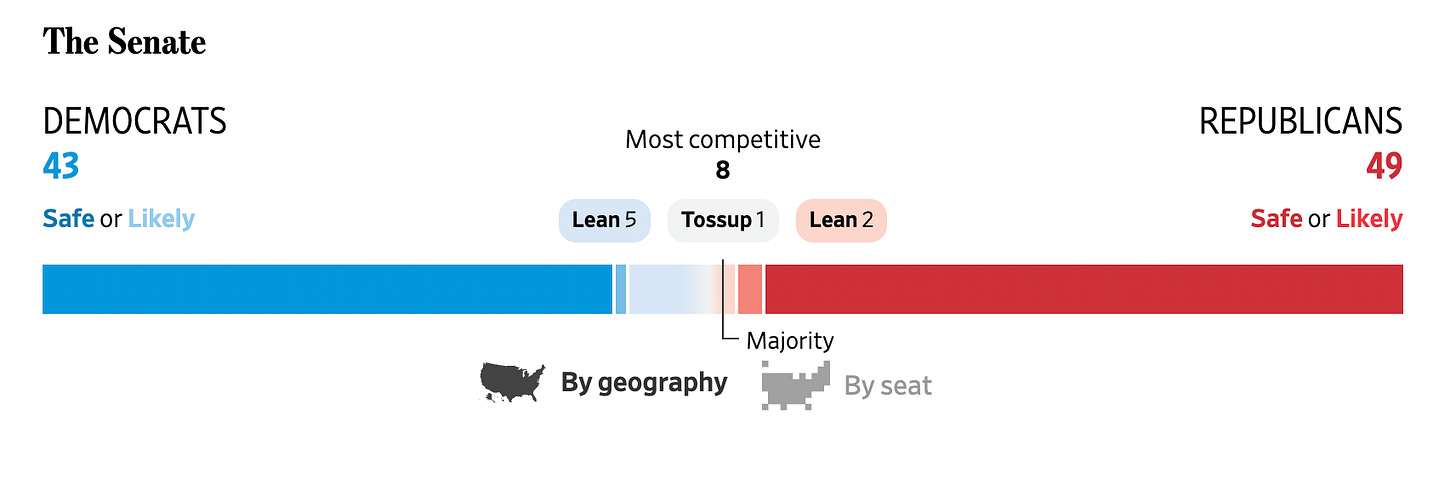A useful feature of The Wall Street Journal’s coverage of the 2024 campaigns goes like this:
Control of the House, the Senate and the presidency are all up for grabs in the 2024 elections, a rare instance of Republicans and Democrats battling for all three levers of elected power in Washington.
Below are the latest forecasts for each, rated on a scale from safely Democratic or Republican to tossup. This outlook is based on combined ratings from the Cook Political Report with Amy Walter; Inside Elections with Nathan L. Gonzales; and Larry Sabato’s Crystal Ball at the University of Virginia Center for Politics.
States rated “likely” for each party aren’t considered competitive but have potential for movement. Those rated as “leaning” one way or the other are competitive, but one party has an advantage.
Here’s the current state of play:
It seems likely that Sen. Jon Tester (D-MT) will lose his bid for re-election. He survived in 2018 because President Trump was not on the ballot. Trump is on the ballot this time (obviously) and the MAGA base will be out in full force. It’s possible, of course, that Tester will snatch victory from the jaws of defeat. If he does, it will be the reverse upset of the decade.
Assuming Tester is defeated, and we do, that brings the count to a 49 Dem—51 GOP U.S. Senate. (The West Virginia Senate race, everyone agrees, is an “automatic” Republican pick-up, as the Democrats’ only hope of holding the seat ended with Sen. Joe Manchin’s retirement).
What’s changed in the last month or so is that 4 Senate seats currently held by Democrats are now up for grabs. David McCormick is running even with Sen. Bob Casey (D-PA). Bernie Marino is even with Sen. Sherrod Brown (D) in Ohio. In the Michigan Senate race, Rep. Mike Rodgers (R) is closing in on Rep. Elissa Slotkin (D). And in Wisconsin, Sen. Tammy Baldwin (D) is in a very close race with GOP businessman Eric Hovde.
In addition, it’s not impossible that the Nevada Senate race will end up being a nail-biter. Sen. Jackie Rosen (D) is favored (the Real Clear Politics polling average shows her ahead outside the margin of error), but it is often the case that when the tide goes in one direction, it makes seemingly “comfortable” leads a lot less comfortable.
All of which raises the prospect of a 1980-like GOP “sweep” of the presidential and the truly competitive U.S. Senate campaigns. This possibility hasn’t really made its way into the mainstream media’s coverage of the campaign. The Senate races are presented as “a battle for control.”
From where we sit, GOP control of the Senate seems a foregone conclusion. The question is whether the margin is 51-49 or 55-45 or somewhere in between. Betting on 55-45 is no longer a fool’s errand.







